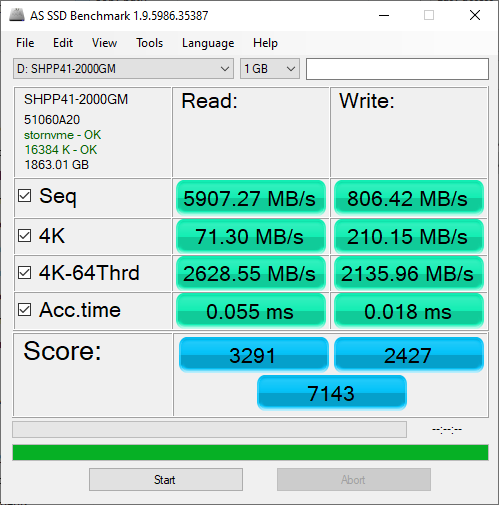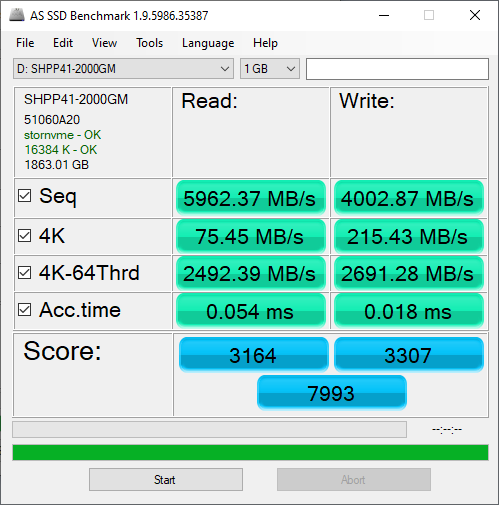TRIM Performance:
While SSD's offer many benefits, there are some downsides to using flash memory. One of the biggest issues people run into is performance degradation. Over time, an SSD will run out of fresh blocks and will have to write over data the file system has marked as deleted. This procedure is very complicated and can slow an SSD's write speeds considerably.
To fix this problem, most manufacturers have added TRIM support to their SSDs. The TRIM command allows an operating system, such as Windows 10, to tell an SSD which data blocks are no longer in use. Using this information, the drive pro-actively erases these blocks and adds them to the free block pool.

To test the Platinum P41's TRIM and garbage collection functions, I first put the drive in a "dirty" state. I used Iometer to fill 80% of the drive and then ran a random write test for 30 minutes. This had little impact on the Platinum P41's read speed. However, its average writing speed dropped to 806.42 MB/s.

SK hynix Platinum P41 - Dirty
To see how well the Platinum P41 could recover, I let the computer sit for about 30 minutes and then reran the test. The drive wasn't able to reach the factory fresh performance shown in our earlier tests. However, its sequential write speed jumped up to 4002.87 MB/s.

SK hynix Platinum P41 - After TRIM
Lastly, I used Parted Magic to perform a secure erase on the Platinum P41. With the drive wiped clean, it had average read and write speeds of 2951.20 MB/s and 2782.48 MB/s, respectively.

SK hynix Platinum P41 - Secure Erased

